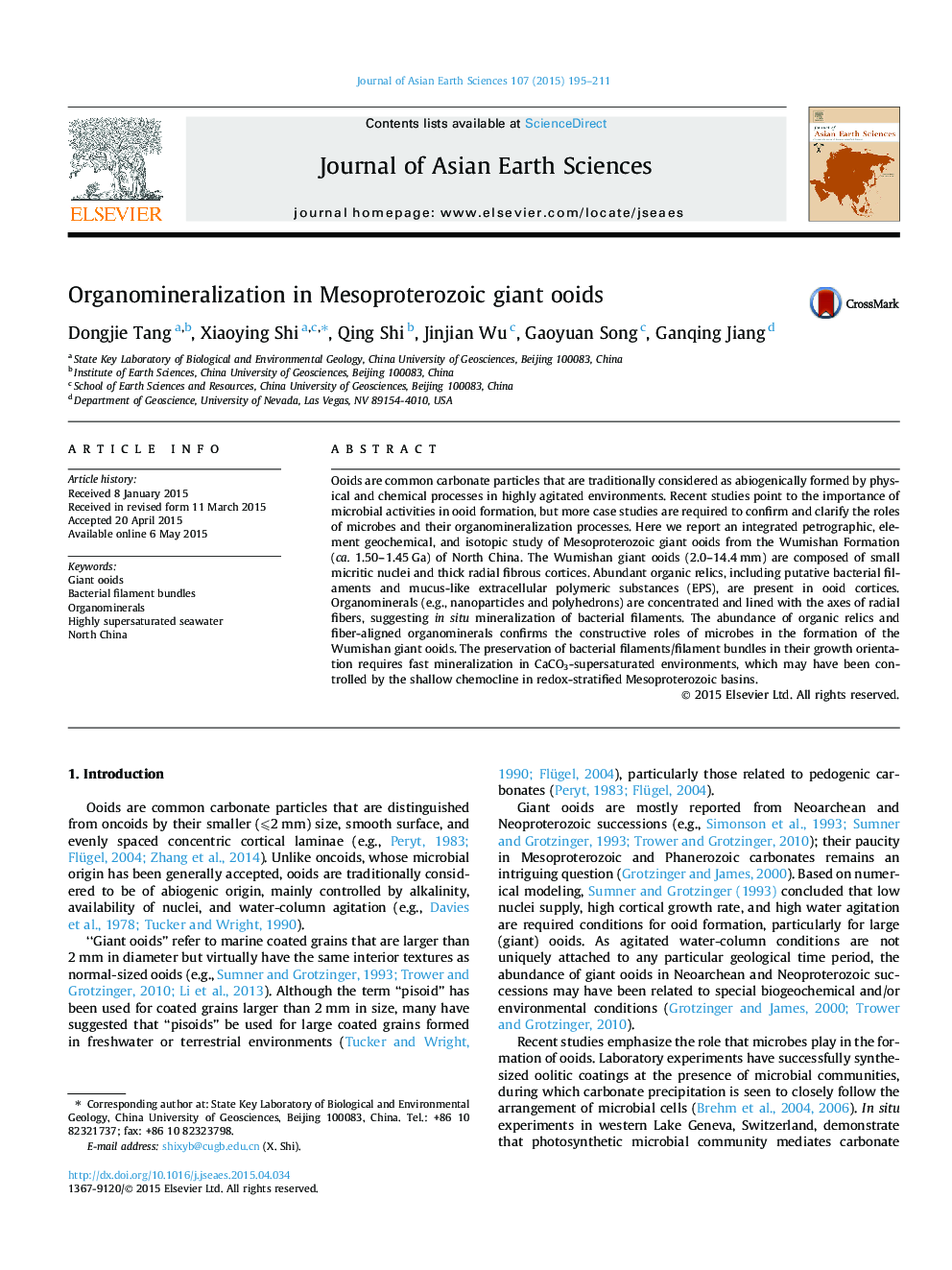| Article ID | Journal | Published Year | Pages | File Type |
|---|---|---|---|---|
| 4730387 | Journal of Asian Earth Sciences | 2015 | 17 Pages |
•Thick cortices in Mesoproterozoic giant ooids resulted from organomineralization.•Well-organized organic relics and organominerals confirm their biogenic origin.•Moderately agitated water and supersaturated CaCO3 are required for their formation.
Ooids are common carbonate particles that are traditionally considered as abiogenically formed by physical and chemical processes in highly agitated environments. Recent studies point to the importance of microbial activities in ooid formation, but more case studies are required to confirm and clarify the roles of microbes and their organomineralization processes. Here we report an integrated petrographic, element geochemical, and isotopic study of Mesoproterozoic giant ooids from the Wumishan Formation (ca. 1.50–1.45 Ga) of North China. The Wumishan giant ooids (2.0–14.4 mm) are composed of small micritic nuclei and thick radial fibrous cortices. Abundant organic relics, including putative bacterial filaments and mucus-like extracellular polymeric substances (EPS), are present in ooid cortices. Organominerals (e.g., nanoparticles and polyhedrons) are concentrated and lined with the axes of radial fibers, suggesting in situ mineralization of bacterial filaments. The abundance of organic relics and fiber-aligned organominerals confirms the constructive roles of microbes in the formation of the Wumishan giant ooids. The preservation of bacterial filaments/filament bundles in their growth orientation requires fast mineralization in CaCO3-supersaturated environments, which may have been controlled by the shallow chemocline in redox-stratified Mesoproterozoic basins.
